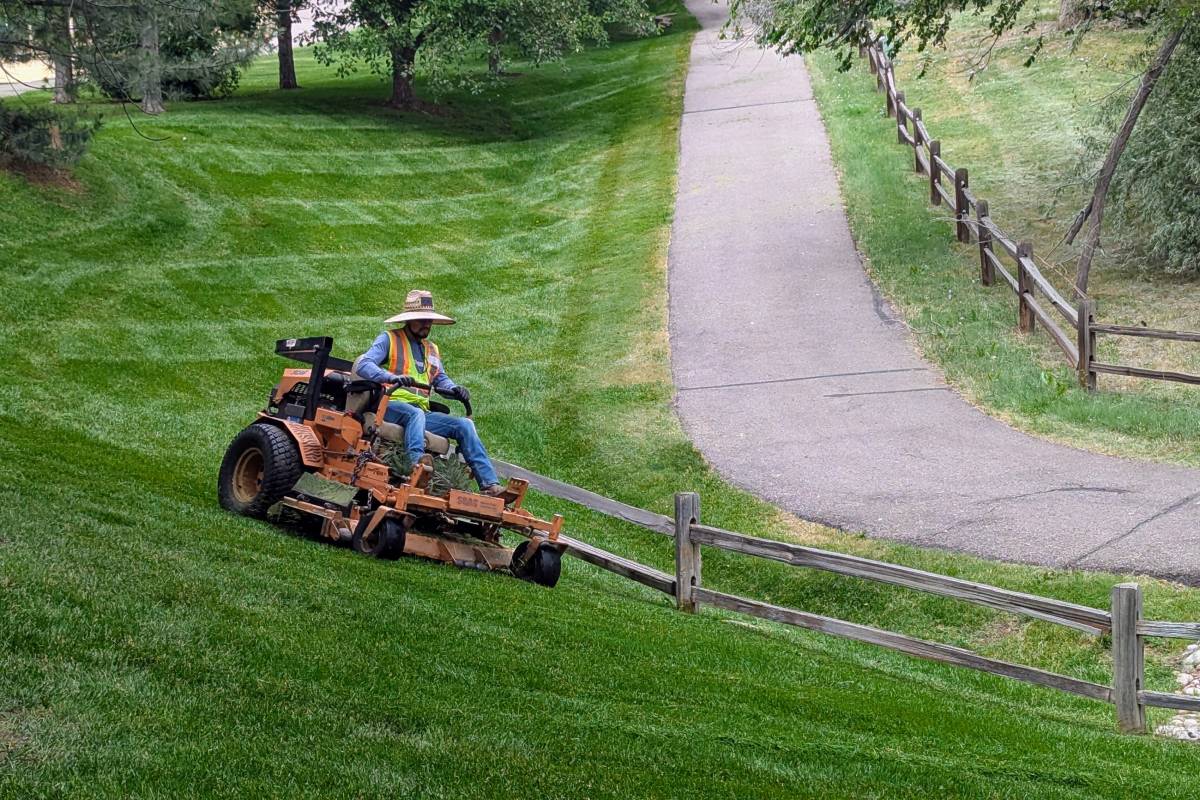
Graveyards do not generally make comfortable homes for people who still have a pulse.
But “Living with the Dead,” a new documentary by Colorado filmmaker Jessica Chance which opens at the Sie FilmCenter on Saturday, March 29, tells the story of the thousands of living people who call a cemetery in Manila, the capital city of the Philippines, home.
Manila is the world’s most densely populated city with more than 43,000 residents per square kilometer. Poverty and overpopulation partly explain why more than 2,000 people have chosen to live in a cemetery that also houses hundreds of thousands of the city’s Catholic dead.
“I agreed to be interviewed so that people would know that you can live anywhere with dignity,” Jenny Juan, a mother of four who lives in a mausoleum with her husband, says.
Some of the residents featured in the documentary, like Angelina Cabuso, a grandmother who came to live in the cemetery after her home was devastated during World War II by Japanese and U.S. troops fighting for control of the city, have lived in the city’s North Cemetery for generations.
“We were born to this situation, we endure it,” Steve Cabuso, her son, who was born in the cemetery, says.
Cabuso earns his living by looking after tombs near the North wall of the cemetery. He keeps the graves clean and receives a little money from the families of the dead in return for his work.
Cabuso’s daughter Jennylyn, who is graduating from college this year, vows to leave the cemetery her family has lived and worked in for generations.
CPR caught up with Denver filmmaker Jessica Chance, the director and co-executive producer of “Living with the Dead,” to find out more about the making of the documentary.
CPR: What first attracted you to document this story of the thousands of people living in a Catholic cemetery in Manila?
Jessica Chance: My partner, James Chance, spotted a short article about the cemetery in Vice Magazine back in 2008. The article left us with a lot of questions. We searched around for more information about the community and could not find any deeper reports. We were hooked. As we’ve discovered since then, the concept of people living in a cemetery is a great hook. It turns heads and makes people ask questions. But the hook is only the tip of a much larger human story about resilience, family and survival in the face of generations of poverty that leads back to World War II, at least, and has real consequences today.
CPR: Why have thousands of Filipinos opted to live in this cemetery? Why is it not taboo?
Jessica Chance: We attempt to answer this complicated question from several angles in the film. It was the chief driver for making the movie. The taboo question is interesting because in some ways it is very taboo to live in a cemetery. For instance, one parent who sends her children to school tells me her children are teased – called zombies. On the other hand, every funeral we’ve witnessed in the North Cemetery has been surrounded by laughing children who live in the cemetery and onlookers. No one seems to think anything of it. Finally, there are many informal settlements in Manila that are much worse off than the cemetery community. The cemetery is protected by guards and has its own economy and job opportunities. So, in effect, the cemetery residents have inadvertently created a kind of gated community.
CPR: You visited the cemetery every day to film your documentary. What was that like? How did you communicate with the residents who live there?
Jessica Chance: Getting to the cemetery and hauling all of our equipment was often exhausting. I would always breathe a sigh of relief when we finally arrived. The North Cemetery is quiet. There is a pervasive sense of peace. English is one of two official languages of the Philippines. Most educated residents speak it well and many speak well enough for us to communicate. When it came to interviews, we worked with translators. One of them grew up in the cemetery but speaks excellent English. We became close to the few families who are featured in the film so they welcomed us. We spent a lot of time visiting with them, more than in production. We feel that those relationships come before the work. It was often hot, and the equipment heavy. But it was an honest joy to spend time in the cemetery. I miss it. Happily, most of us are friends on Facebook and so we keep in regular contact. The main characters have seen the film and like it.
CPR: In the film, you document an arrangement the residents of the cemetery made with the people whose loved ones are buried in Manila's North Cemetery. Tell us about that.
Jessica Chance: Many of the residents are caretakers of graves and mausoleums. Some families are paid to take care of a wealthy family’s mausoleum. They end up living in the structure, drying clothes, sleeping, eating and playing cards on the raised tombs. They make sure everything is in order for the family when they visit. For example, they make sure the grave isn’t harmed or burglarized. They also paint and clean the mausoleum before the deceased’s birthday and for All Saint’s Day, which is a huge event in the Philippines.
CPR: What are you hoping audiences will take away from your documentary?
Jessica Chance: We had a test audience watch an earlier draft of the film and fill out anonymous forms. The varied feedback was interesting. One man, who grew up in the Philippines, felt the film accurately addresses many of the major issues facing Manila today. Another gentleman questioned whether our purpose was to make Americans feel guilty about World War II. We specifically did not set out to leave our audience with a particular message, but rather, a challenging story.
“Living with the Dead” opens this Saturday, March 29th at 7 p.m. at the Sie FilmCenter on Colfax.








